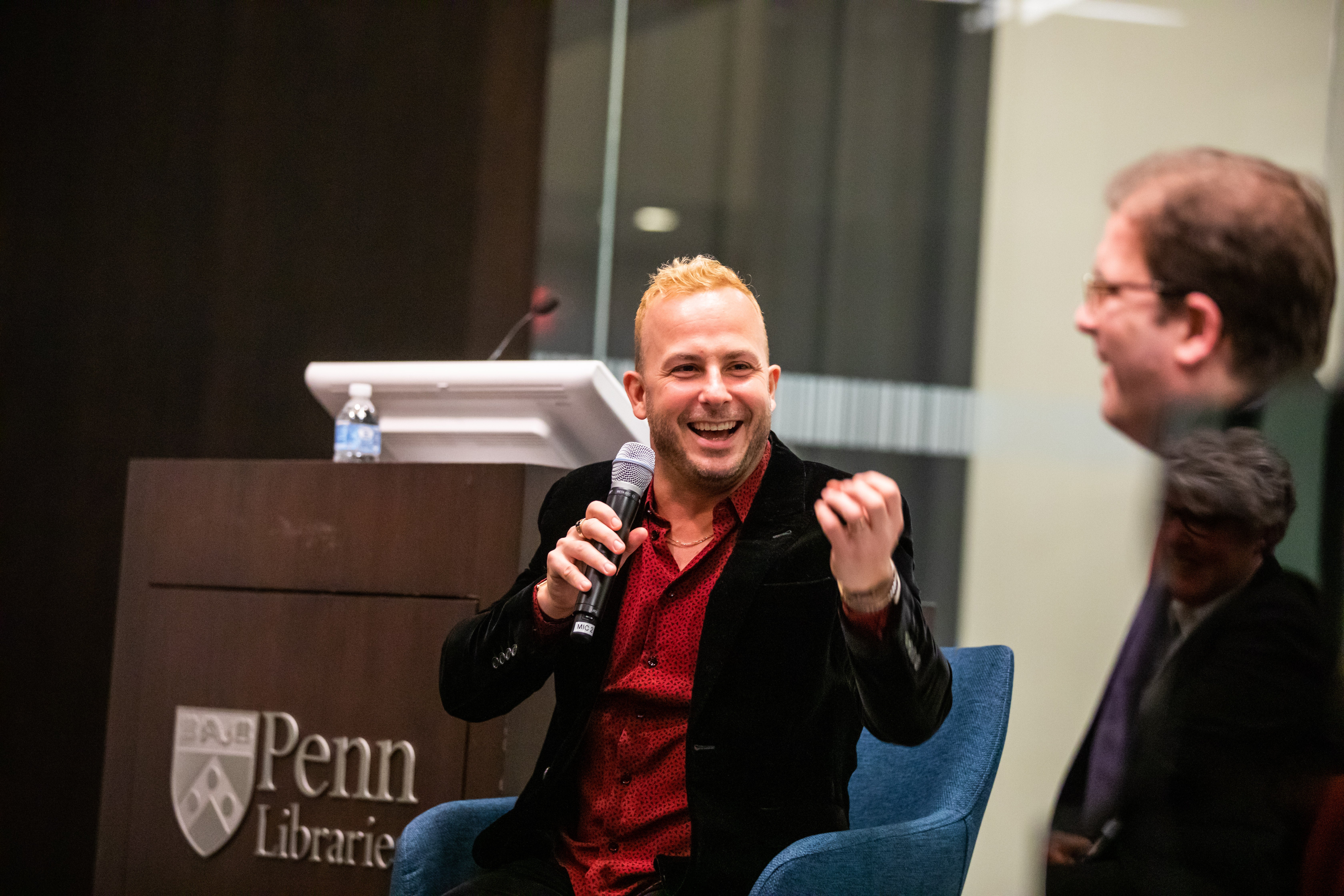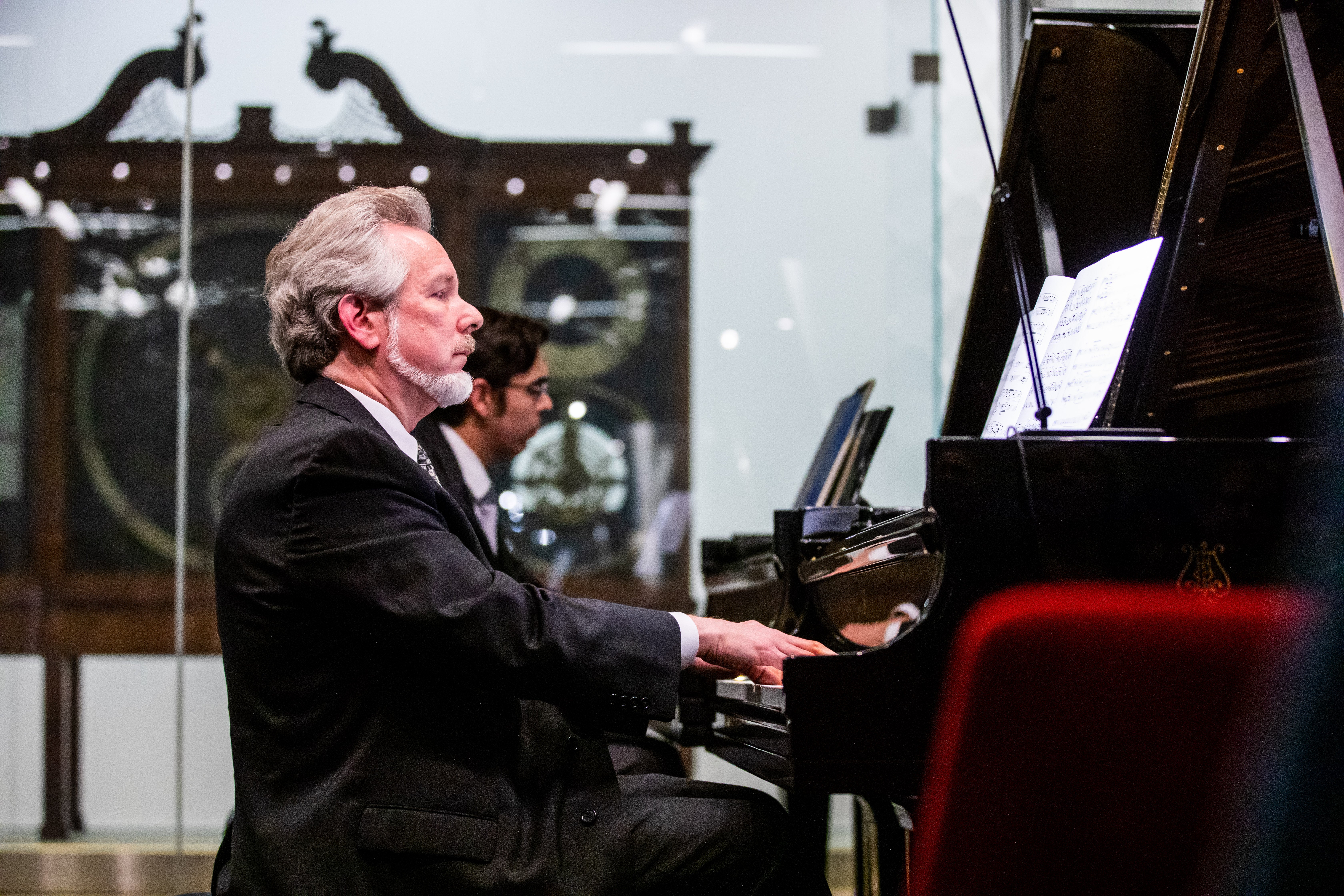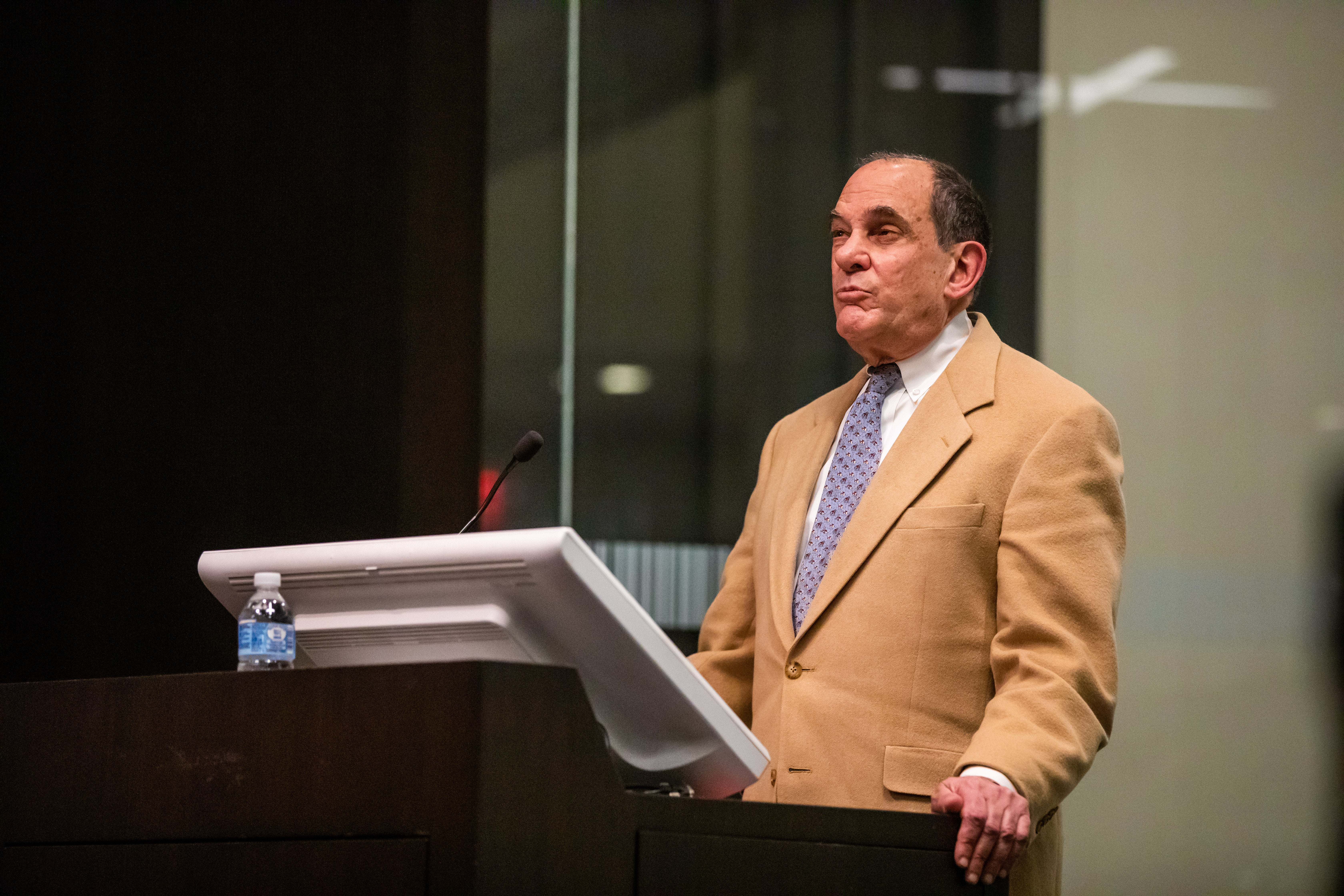A Rare Discovery: Celebrating Rachmaninoff’s Symphonic Dances with The Philadelphia Orchestra

“No one expected this recording to show up,” recalled Ward Marston. “No one knew it existed.”
A wholly unexpected musical discovery was at the center of a collaboration between the Penn Libraries and The Philadelphia Orchestra on Friday night, as the two institutions partnered to celebrate the only known recording of composer and pianist Sergei Rachmaninoff playing his last major orchestral work, Symphonic Dances.
The 1940 recording, held among the Penn Libraries collections, features the composer’s solo run-through of the work for Eugene Ormandy, then the music director of The Philadelphia Orchestra, just weeks before the Orchestra premiered the piece.
Constantia Constantinou, H. Carton Rogers III Vice Provost and Director of the Penn Libraries, introduced the Orchestra’s Music Director, Yannick Nézet-Séguin, and its President and CEO, Matías Tarnopolsky, to a full house on Friday. Nearly every seat was filled in the Class of 1978 Orrery Pavilion in Van Pelt-Dietrich Library Center, with many extra chairs set up and spilling out beyond the retractable glass walls.

In a lively interview format, Tarnopolsky engaged Nézet-Séguin on topics ranging from the conductor’s love for Rachmaninoff’s music as a teenager to the reasons he found Symphonic Dances difficult to conduct but extremely rewarding. And, of course, they discussed Rachmaninoff’s deep connection to The Philadelphia Orchestra and the historic recording that had inspired the celebration.
Nézet-Séguin said that, to his knowledge, this type of “piano illustration for orchestra” was unique. “The incredible insight of this discovery is not only capturing the composer performing his own piece,” he said, “but capturing a composer who is a legendary pianist playing the piece on a piano in order to show the orchestra where to go.”
Playing back-to-back clips of the 1940 recording of Rachmaninoff and a performance of the same piece by The Philadelphia Orchestra, Nézet-Séguin treated guests to a vivid demonstration of Rachmaninoff’s illustrative skills, with the composer’s own buoyant piano chords and percussive growls echoed moments later in the sounds of woodwinds and strings.
The recording of Rachmaninoff playing Symphonic Dances is doubly notable because the Russian-born musician famously refused to allow any recordings or broadcasts of his live performances—and as a result, his public persona was restricted for decades to what listeners could glean from his poised, impeccable recordings for RCA Records.
But the discovery and restoration of the recording found at the Penn Libraries changed that.
“I can’t begin to tell you what it felt like,” Marston, producer and cofounder of Marston Records, recalls of his role in unearthing the recording. “The holy grail was to find a recording of Rachmaninoff playing live.”

As Marston told the audience, in 2007, visiting researcher Simon Trezise found something intriguing in the Penn Libraries catalog: a listing for a recording of Symphonic Dances “played by the composer.” Marston recounted Trezise calling him to ask, “What do you think that means?”
On listening to it, Marston realized they had indeed uncovered a private recording of Rachmaninoff playing his symphonic work on the piano, shedding new light and nuance onto the composer’s artistic legacy. Recognizing the recording’s significance, Marston restored it, digitized it, and, with the approval of the Penn Libraries, released it on his label in 2018, in a production that the Wall Street Journal called “one of the most searing listening experiences in the history of recorded sound.”
The recording is part of the Ormandy Collection at the Penn Libraries, which Tarnopolsky described as “a source of inspiration to anyone studying music.” It includes scores, correspondence, programs, photographs, recordings, oral histories and audiovisual material. The collection, documenting Ormandy's extraordinary 64-year career, was donated to the University of Pennsylvania Libraries in 1987 by Ormandy’s wife, Margaret Ormandy.
To bring Friday’s event to a close, two pianists on the faculty of Swarthmore College, Andrew Hauze and Marcantonio Barone, performed Rachmaninoff’s two-piano arrangement of the Symphonic Dances.
As the final notes reverberated in the pavilion, and the evening ended with a full-circle view of both composition and composer, Ward Marston’s final observations rang true: “Nothing sounds quite like Rachmaninoff, and it really is splendid to celebrate him and this recording.”
Date
February 4, 2020
